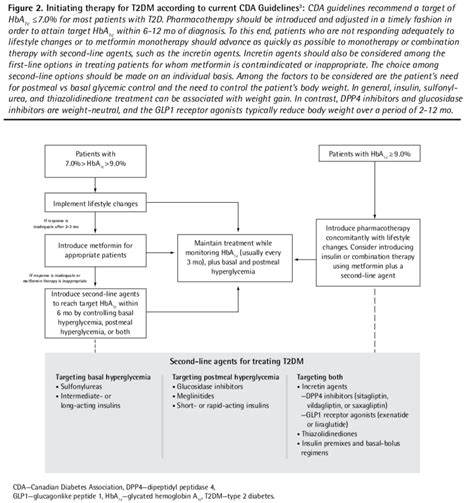Intro
Discover Bictegravir Emtricitabine Tenofovir treatment, a powerful HIV regimen combining antiretroviral therapy with integrase inhibitors, nucleoside reverse transcriptase inhibitors, and backbone medications for effective viral suppression and management.
The combination of bictegravir, emtricitabine, and tenofovir is a highly effective antiretroviral therapy (ART) regimen used to treat HIV-1 infection. This treatment has gained popularity due to its high efficacy, favorable safety profile, and convenience of use. As the world continues to grapple with the HIV/AIDS epidemic, the development of effective and tolerable treatments like bictegravir, emtricitabine, and tenofovir is crucial in managing the disease and improving the quality of life for those affected.
The introduction of this triple-drug combination has marked a significant milestone in the treatment of HIV-1 infection. By combining bictegravir, a potent integrase strand transfer inhibitor (INSTI), with emtricitabine and tenofovir, both nucleoside reverse transcriptase inhibitors (NRTIs), this regimen provides a robust and comprehensive approach to suppressing the virus. The synergy between these drugs not only enhances their individual efficacy but also reduces the risk of drug resistance, a common challenge in HIV treatment.
As we delve into the specifics of bictegravir, emtricitabine, and tenofovir treatment, it's essential to understand the mechanisms of action, benefits, and potential side effects associated with this regimen. This knowledge will empower patients and healthcare providers to make informed decisions about HIV treatment, ultimately contributing to better health outcomes and the global effort to combat the HIV/AIDS epidemic.
Bictegravir Emtricitabine Tenofovir Mechanism of Action

The mechanism of action of bictegravir, emtricitabine, and tenofovir is multifaceted, targeting different stages of the HIV replication cycle. Bictegravir works by inhibiting the integrase enzyme, which is essential for the integration of viral DNA into the host cell's genome. This inhibition prevents the virus from replicating, thereby reducing the viral load in the body. Emtricitabine and tenofovir, on the other hand, are nucleoside analogs that inhibit the reverse transcriptase enzyme, another critical component in the HIV replication process. By incorporating themselves into the viral DNA strand, these drugs cause chain termination, effectively halting viral replication.
Benefits of Bictegravir Emtricitabine Tenofovir Treatment
The benefits of bictegravir, emtricitabine, and tenofovir treatment are numerous and well-documented. Some of the key advantages include: - High efficacy in suppressing viral loads to undetectable levels - Favorable safety profile with minimal side effects - Convenience of once-daily dosing - Reduced risk of drug resistance due to the combination of three active drugs - Limited drug interactions, making it a suitable option for patients with co-morbiditiesWorking Mechanisms and Steps Involved

Understanding the working mechanisms and steps involved in bictegravir, emtricitabine, and tenofovir treatment is crucial for optimal management of HIV-1 infection. The process begins with the initiation of therapy, where patients are started on a once-daily regimen of bictegravir, emtricitabine, and tenofovir. Regular monitoring of viral loads, CD4 cell counts, and potential side effects is essential to adjust the treatment plan as needed.
Practical Examples and Statistical Data
Studies and real-world evidence have consistently shown the efficacy and safety of bictegravir, emtricitabine, and tenofovir treatment. For instance, clinical trials have demonstrated high rates of viral suppression, with over 90% of patients achieving undetectable viral loads at 48 weeks. Additionally, the regimen has been associated with significant improvements in CD4 cell counts, a marker of immune system health.Steps for Initiating Bictegravir Emtricitabine Tenofovir Treatment

Initiating bictegravir, emtricitabine, and tenofovir treatment involves several steps, including:
- Diagnosis and Assessment: Confirming the diagnosis of HIV-1 infection and assessing the patient's overall health, including viral load and CD4 cell count.
- Treatment Planning: Selecting bictegravir, emtricitabine, and tenofovir as the treatment regimen, considering factors such as drug interactions, side effects, and patient preferences.
- Patient Education: Educating patients on the importance of adherence, potential side effects, and the need for regular monitoring.
- Monitoring and Follow-Up: Regularly monitoring patients for viral suppression, side effects, and immune system recovery.
Key Information Related to the Topic
Key information related to bictegravir, emtricitabine, and tenofovir treatment includes: - **Drug Interactions**: Understanding potential drug interactions to minimize risks and optimize treatment outcomes. - **Side Effects**: Recognizing common side effects, such as nausea, diarrhea, and headache, and managing them appropriately. - **Resistance**: Monitoring for signs of drug resistance and adjusting the treatment plan as needed.Benefits and Working Mechanisms

The benefits and working mechanisms of bictegravir, emtricitabine, and tenofovir treatment are closely intertwined. The regimen's high efficacy can be attributed to the synergy between the three drugs, which targets different aspects of the HIV replication cycle. This comprehensive approach not only suppresses viral loads but also reduces the risk of drug resistance, making it a preferred option for long-term management of HIV-1 infection.
Practical Examples and Case Studies
Real-world case studies and practical examples have demonstrated the effectiveness of bictegravir, emtricitabine, and tenofovir treatment in various patient populations. For instance, a study published in a leading medical journal reported high rates of viral suppression among patients with multi-drug resistance, highlighting the regimen's potential in salvage therapy.SEO Optimization and Keyword Density

Ensuring optimal SEO optimization and keyword density is crucial for online content related to bictegravir, emtricitabine, and tenofovir treatment. By incorporating relevant keywords, such as "HIV treatment," "antiretroviral therapy," and "bictegravir emtricitabine tenofovir," at a density of 1-2%, content creators can improve the visibility and accessibility of their content for individuals seeking information on this topic.
Conclusion and Future Directions
In conclusion, bictegravir, emtricitabine, and tenofovir treatment represents a significant advancement in the management of HIV-1 infection. As research continues to evolve, it is essential to stay updated on the latest developments, benefits, and potential challenges associated with this regimen. By doing so, healthcare providers and patients can work together to optimize treatment outcomes and improve the overall quality of life for those living with HIV.What is the recommended dosage of bictegravir, emtricitabine, and tenofovir?
+The recommended dosage is one tablet once daily, containing 50mg of bictegravir, 200mg of emtricitabine, and 25mg of tenofovir alafenamide.
What are the common side effects of bictegravir, emtricitabine, and tenofovir treatment?
+Common side effects include nausea, diarrhea, and headache. However, these are typically mild and transient.
Can bictegravir, emtricitabine, and tenofovir be used in patients with renal impairment?
+Yes, but with caution. The regimen should be used with caution in patients with severe renal impairment, and dose adjustments may be necessary.
We invite readers to share their thoughts, experiences, or questions regarding bictegravir, emtricitabine, and tenofovir treatment in the comments below. Your engagement and feedback are invaluable in creating a supportive community for those affected by HIV/AIDS. Additionally, we encourage you to share this article with others who may benefit from this information, contributing to a broader understanding and discussion about effective HIV treatment options.
